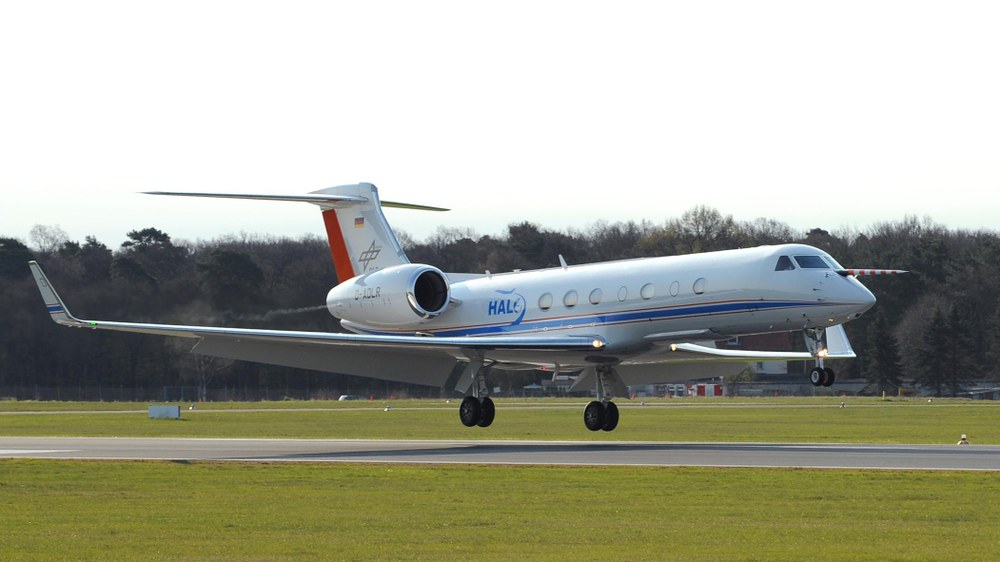Research priorities

Aerosole, Wolken und Wasserkreislauf
Fein verteilte, mikroskopisch kleine Partikel in der Luft – Aerosole – beeinflussen nicht nur die Luftqualität, sondern verringern auch den Anteil des Sonnenlichts, der die Erdoberfläche erreicht. Dadurch wird die Luft am Boden weniger warm. Darüber hinaus ändern sie die Strahlungseigenschaften und die Lebensdauer von Wolken. Diese mikrophysikalischen Wechselwirkungen zwischen Aerosolen und Wolken sowie ihr Einfluss auf den atmosphärischen Energiehaushalt und den Wasserkreislauf können nur durch Messungen in der Atmosphäre genau bestimmt werden. Dies kann durch vergleichende Messungen in verschiedenen Regionen der Atmosphäre erreicht werden: in relativ sauberen maritimen Regionen, in der Atmosphäre über dem Regenwald oder in durch Industrie oder Waldbrände verschmutzten Luftmassen.
Selbstreinigungskapazität der Atmosphäre
Die Lebensdauer von Schadstoffen und verschiedenen Treibhausgasen in der Atmosphäre wird durch Oxidationsprozesse kontrolliert, die durch Hydroxyl-Radikale initiiert werden. Diese Radikale begrenzen den Konzentrationszuwachs vieler Gase, indem diese aus der Atmosphäre entfernt werden, bevor sie toxische Konzentrationen erreichen oder in die Stratosphäre gelangen, wo sie zum Ozonabbau beitragen. Es wird von besonderem Interesse sein, die stark steigenden Schadstoff-Emissionen in den Hauptquellregionen Europa, Nordamerika und Asien zu vermessen und ihre Wirkung auf die atmosphärische Oxidationsfähigkeit zu bestimmen. Mit HALO werden viele der relevanten Spurengase, einschließlich der Radikale, gleichzeitig gemessen. Dies ist zum Verständnis der luftchemischen Prozesse und zur Überprüfung der vorhandenen Atmosphärenmodelle notwendig.
Tropopausenchemie und Dynamik
Der Übergangsbereich zwischen Troposphäre und Stratosphäre bis zu einer Höhe von 16 Kilometern ist messtechnisch schwierig zu erschließen. Diese Region beeinflusst jedoch ganz wesentlich den atmosphärischen Energiehaushalt, die Oxidationsfähigkeit und den Vertikaltransport von Impuls und Spurengasen. Darüber hinaus ist der Einfluss von Eiswolken in großen Höhen (Zirren) auf Klimastörungen von enormer Bedeutung. Der Klimaeffekt kann dadurch verstärkt oder abgeschwächt werden. Die schnell wachsende Flotte kommerzieller Flugzeuge, die in diesen Höhen fliegen, beeinflusst zusätzlich die Zirren durch Kondensstreifen und Aerosole mit bis jetzt unbekannten Konsequenzen. Mit HALO werden die Messungen durchgeführt, die nötig sind, um diese kritischen Faktoren zu quantifizieren.
Klimaveränderung und extreme Wetterereignisse
In einem sich verändernden Klima, verbunden mit der zunehmenden Konzentration von Treibhausgasen, nimmt der Niederschlag in vielen Regionen zu. Denn von einer wärmeren Erdoberfläche verdunstet mehr Wasser. In Verbindung mit einem veränderten vertikalen Temperaturprofil nimmt die Niederschlagsrate in Gewittern und großskaligen Wettersystemen zu. Das führt zu verstärkter Aufwärtsbewegung von Luftmassen (Konvektion) bis zu den höchsten Schichten der Troposphäre. Diese intensive Aufwärtsbewegung muss durch die Abwärtsbewegung in anderen Bereichen kompensiert werden, die dadurch trockener werden. Mit dem Forschungsflugzeug HALO lässt sich mit den entsprechenden wissenschaftlichen Instrumenten der gesamte Höhenbereich der Troposphäre untersuchen. So können umfassende Erkenntnisse im Bereich der Konvektion gewonnen werden.
